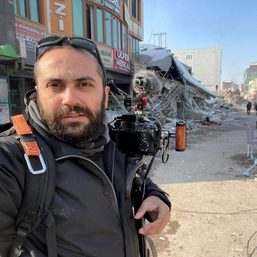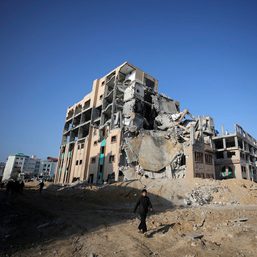SUMMARY
This is AI generated summarization, which may have errors. For context, always refer to the full article.
![[Rappler’s Best] Bugged by the bug](https://www.rappler.com/tachyon/2024/03/bugged-by-the-bug.jpg)
Just as we were all revved up for a soon-to-be privatized (and hopefully more efficient) flagship airport, our dreamland is bitten by a bug.
Last Tuesday, February 27, a post about a Filipino passenger with bed bug bites at the Ninoy Aquino International Airport (NAIA) went viral, prompting an apology from the agency that manages the terminals – and a decision to remove the bug-infested chairs.
These are no ordinary items. Made of rattan, the chairs were installed in April 2023 at NAIA Terminal 2, as part of a Filipino-inspired renovation that included solihiya lamps and panels and mini-gardens – a joint project by the Department of Tourism and the Department of Transportation. Oh, what a delight to see!
One would have thought, though, that wooden materials are most vulnerable to the surot that infects our daily lives. Which means they needed more attention and care. But airport management said they were not remiss, insisting that both terminals 2 (where the rattan chairs are) and 3 (where surot was also found in non-rattan chairs) went through regular deep disinfection. So perhaps, said a pest control official at NAIA in an interview with GMA’s Mariz Umali, the pests were… “imported.”
Let’s let that pass. This seemingly trivial issue should not be trivialized, however. The bug story reinforces NAIA’s bad rep in the world.
- NAIA is ranked Asia’s fourth worst airport. As business reporter Lance Spencer Yu asked in this story, can its new operator – San Miguel and the Incheon International Airport Corporation – turn it around?
- Why should these surot-infested chairs matter? It’s all about customer experience, wrote senior editor Isagani de Castro Jr. The Philippines continues to lag behind neighbors in tourist arrivals, with only 5 million in 2023. “Positive experience in airports is an important factor in getting tourists to come – and visit again – since it’s the first main space that travelers have experiences within a country or territory,” De Castro wrote in “Why airport ‘surot’ and Taylor Swift matter.”
- Outside NAIA, horror stories persist. Just last December, the Land Transportation Office slapped a 90-day preventive suspension on the license of a cab driver who had been charging P10,000 upwards (roughly $180) for rides from NAIA.
Speaking of airports and Taylor Swift, who’s in Singapore until March 9 for her The Eras Tour (here’s the ultimate guide to the concerts), Filipino Swifties got scammed on Facebook by someone who sold tickets to Taylor’s Singapore gigs. This gave online marketplace Carousell no choice but to suspend its ticket sales until March 9 in six Southeast Asian countries, including the Philippines.
And speaking of scams. We were alerted to a deepfake video of Nobel Peace Prize laureate and Rappler CEO Maria Ressa that showed her purportedly promoting Bitcoin. This was circulated on Facebook and through an ad on Microsoft’s Bing platform. In this story by Rappler’s Gemma Mendoza and Gelo Gonzales, we can see how a Russian scam network circulated the fake video. In particular:
- Qurium, which helped us investigate what happened, said a timezone timestamp of the links showed a “solid indication” that the network is of Russian origin.
- The pages where the fake videos were posted were designed to be viewed only through Philippine internet service providers.
Deepfake videos are powerful tools of deceit and manipulation.
- In Indonesia, deepfakes had been used in the lead-up to the February presidential elections.
- In taking stock of 2023 and insights for 2024, we raised concern about the increasing use of deepfake videos and the growing reliance on artificial intelligence for disinformation. Read about it here.
As we fret over airport bugs, scammers, and fakers, Gaza continues to burn beyond recognition and suffer beyond grief.
On February 29, Israeli forces shot dead more than 100 Palestinians who were lining up for an aid delivery – the biggest single-day loss of civilian lives in weeks. We thought we’d gotten used to devastating images from Gaza by now, but last week’s pictures were gut-wrenching, making us doubt our humanity and question any promise of a path forward.
The Palestinian death toll has already passed the 30,000 mark. The United Nations warned last week that a quarter of the population in Gaza – at least 576,000 people – are one step away from famine. US Vice President Kamala Harris pressed Israel to address this “humanitarian catastrophe,” in one of the strongest statements on the issue by a US official – but what does that even mean? Where lies hope? – Rappler.com
Rappler’s Best is a weekly newsletter of our top picks delivered straight to your inbox every Monday.
To subscribe, visit rappler.com/profile and click the Newsletters tab. You need a Rappler account and you must log in to manage your newsletter subscriptions.
Add a comment
How does this make you feel?
![[Vantage Point] Bug and rodent infestation in NAIA: Why aren’t we surprised?](https://www.rappler.com/tachyon/2024/03/tl-bugs-and-rodents.jpg?resize=257%2C257&crop_strategy=attention)



















There are no comments yet. Add your comment to start the conversation.